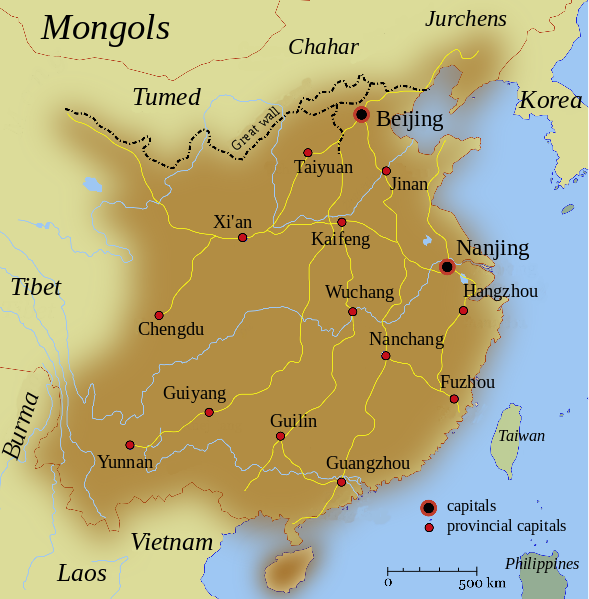1368 C.E. –1644 C.E.

The early Ming dynasty was a period of cultural restoration and expansion. The reestablishment of an indigenous Chinese ruling house led to the imposition of court-dictated styles in the arts. Painters recruited by the Ming court were instructed to return to didactic and realistic representation, in emulation of the styles of the earlier Southern Song (1127–1279 C.E.) Imperial Painting Academy. Large-scale landscapes, flower-and-bird compositions, and figural narratives were particularly favored as images that would glorify the new dynasty and convey its benevolence, virtue, and majesty.
Valuing the presence of personality in a work over mere technical skill, the Ming scholar-painter aimed for mastery of performance rather than laborious craftsmanship.
In Ming painting, the traditions of both the Southern Song painting academy and the Yuan (1279–1368 C.E.) scholar-artist were developed further. While the Zhe (Zhejiang Province) school of painters carried on the descriptive, ink-wash style of the Southern Song with great technical virtuosity, the Wu (Suzhou) school explored the expressive calligraphic styles of Yuan scholar-painters emphasizing restraint and self-cultivation. In Ming scholar-painting, as in calligraphy, each form is built up of a recognized set of brushstrokes, yet the execution of these forms is, each time, a unique personal performance. Valuing the presence of personality in a work over laborious craftsmanship.
Early Ming decorative arts inherited the richly eclectic legacy of the Mongol Yuan dynasty, which included both regional Chinese traditions and foreign influences. For example, the fourteenth-century development of blue-and-white ware and cloisonné; enamelware arose, at least in part, in response to lively trade with the Islamic world, and many Ming examples continued to reflect strong West Asian influences. A special court-based Bureau of Design ensured that a uniform standard of decoration was established for imperial production in ceramics, textiles, metalwork, and lacquer.
EVENTS:
CHINA:
1406 -1421 C.E. Building of the Forbidden City of Beijing
1514 C.E. Chinese begin trading with the Portuguese and support growth with imported silver.
WORLD:
1431 C.E. Joan of Arc martyred
1478 C.E. Spanish Inquisition founded
1485-1603 C.E. Tudor period in Britain
1492 C.E. Columbus sails to the America's, Expulsion of Jews from Spain by Ferdinand and Isabella
1500 C.E. Protestant Reformation in Europe
1513 C.E. Balboa Discovers the Pacific
1519 C.E. Cortes claims Mexico for Spain
1588 C.E. Naval battle between English ships and an invading Spanish Armada
1600 C.E. Founding of the British East India Company for trading with southern and eastern Asia
1600s C.E. Paper money first used in Europe
1609 C.E. Henry Hudson Discovers New York Harbor
1607 C.E. John Smith forms Jamestown, VA
.......................................
